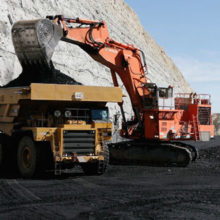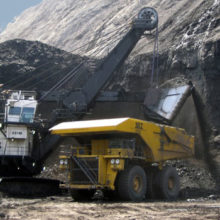In a recent report, we wrote that mines extracting coal from federal leases employ relatively few people. In 2015, for example, federal coal made up 43 percent of total U.S. coal production, but was responsible for only 19 percent of direct coal mining jobs.
These direct federal coal mining jobs are concentrated in relatively few counties. Of the 224 counties that had coal mines nationally in 2014, only 28 counties had coal mines with federal leases–and in just 10 of these counties do direct coal mining jobs constitute more than five percent of total county employment (in no county do direct coal mining jobs exceed 15 percent of total employment).
Of the 28 federal coal mining counties, 27 are non-metro counties (including all of the ten counties most dependent on coal mining job) and 21 are located in the West.
This blog draws on federal data and research to describe more about the local economies of the communities most dependent on federal coal. Users also can download the economic data used in this blog to describe federal coal counties.
Positive Economic Indicators for Communities Dependent on Federal Coal
The ten counties most dependent on jobs from federal coal mining performed well economically in 2014 and into 2015 (the latest data available). Compared to all other non-metro counties in the United Sates, coal-dependent counties had relatively high average earnings per job, relatively low unemployment rates, and relatively few people in deep poverty.
Interactive: Ten Counties Most Dependent on Federal Coal Mining for Employment Have Performed Well Compared to a Benchmark of All Other Non-Metro Counties in the U.S. 2014-2015
For example, in 2014 the average earnings per job among these non-metro counties was $59,577 (2015 $s), which is exceptionally high for non-metro counties. By comparison, the average earnings per job in 2014 for all U.S. non-metro counties was $42,734 (2015 $s).
The most notable exceptions to the positive economic indicators are Big Horn and Rosebud counties in Montana, where more than half of the population is American Indian and poverty has been persistent.
Headwaters Economics has several tools to help understand the role of coal mining and power generation in local and regional economies, and to compare coal-dependent counties to their peer counties across the West.
Rural Challenges for Communities Dependent on Federal Coal
The situation in many of these counties, however, is changing as coal production declines and coal mines are laying off workers. Coal fired power plant retirements and competition with natural gas suggest that coal production will remain at lower levels and will be more volatile.
These market changes will expose these coal dependent communities to new risks.
A community’s vulnerability to risk of decline in the coal mining sector (or any large employer) is correlated with several characteristics: the size of the county and economy (measured here simply as population), the degree of isolation from metropolitan and global markets (measured as travel time to major airports), and the level of education (measured as the percent of the adult population with a college degree).
Interactive: Similar to Other Non-Metro Counties, Those Dependent on Federal Coal Are Small and Isolated, Limiting Opportunities for Diversification. 2014, 2016
The ten counties most dependent on jobs from federal coal mining have many of the same challenges shared by other rural counties experiencing a decline in natural resource sectors.
The ten federal coal dependent counties have, on average, a population size of 14,000 and are isolated at 3.5 hours’ drive from the nearest major airport. Only 18 percent of adults in these ten counties have college degrees, similar to other non-metro counties but lower than metropolitan counties where 32 percent of adults have college degrees.
Discussion
The challenges associated with a lack of access to markets and smaller numbers of educated workers have intensified due to structural changes in the U.S. economy in recent decades, including a major shift away from employment in mature natural resources sectors and manufacturing. The coal mining sector, for example, in 2015 employed 120,000 fewer people compared to 1985 even as more coal was extracted over the same period.
New jobs are being created in services sectors, the most important being a set of high-wage jobs in “innovation” sectors, including software, research R&D, finance, and technology. These innovation jobs are locating in cities and non-metropolitan areas connected to cities by airports that have access to finance, educated labor, and global markets.
Rural counties without easy access to markets or an educated labor force will not compete as successfully for these innovation jobs. They will remain more dependent on natural resources sectors, which are likely to become more volatile in price and production and subject to market and regulatory forces outside of the full control of counties where extraction takes place.
The opportunity and exposure to risks caused by declining coal extraction will vary from county to county. Isolated and small communities will feel the impact most acutely. Larger and more connected communities with more highly educated workers may find more opportunity to diversify and grow in sectors other than coal mining.
Additional royalty revenue from ongoing coal mining could generate resources that then could be utilized to provide assistance based on proven strategies and the unique characteristics of coal-dependent communities.



